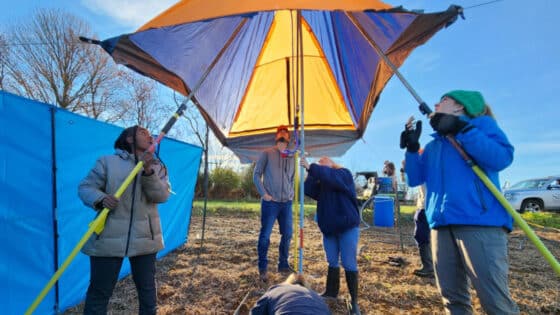Richey, J.E., J.M. Melack, A.K. Aufdenkampe, V.M. Ballester, and L.L. Hess. 2002. Nature 416:617–620.
Abstract
Terrestrial ecosystems in the humid tropics play a potentially important but presently ambiguous role in the global carbon cycle. Whereas global estimates of atmospheric CO2 exchange indicate that the tropics are near equilibrium or are a source with respect to carbon, ground-based estimates indicate that the amount of carbon that is being absorbed by mature rainforests is similar to or greater than that being released by tropical deforestation (about 1.6 Gt C yr-1). Estimates of the magnitude of carbon sequestration are uncertain, however, depending on whether they are derived from measurements of gas fluxes above forests or of biomass accumulation in vegetation and soils. It is also possible that methodological errors may overestimate rates of carbon uptake or that other loss processes have yet to be identified. Here we demonstrate that outgassing (evasion) of CO2 from rivers and wetlands of the central Amazon basin constitutes an important carbon loss process, equal to 1.2 ± 0.3 Mg C ha-1 yr-1. This carbon probably originates from organic matter transported from upland and flooded forests, which is then respired and outgassed downstream. Extrapolated across the entire basin, this flux — at 0.5 Gt C yr-1 — is an order of magnitude greater than fluvial export of organic carbon to the ocean. From these findings, we suggest that the overall carbon budget of rainforests, summed across terrestrial and aquatic environments, appears closer to being in balance than would be inferred from studies of uplands alone.


